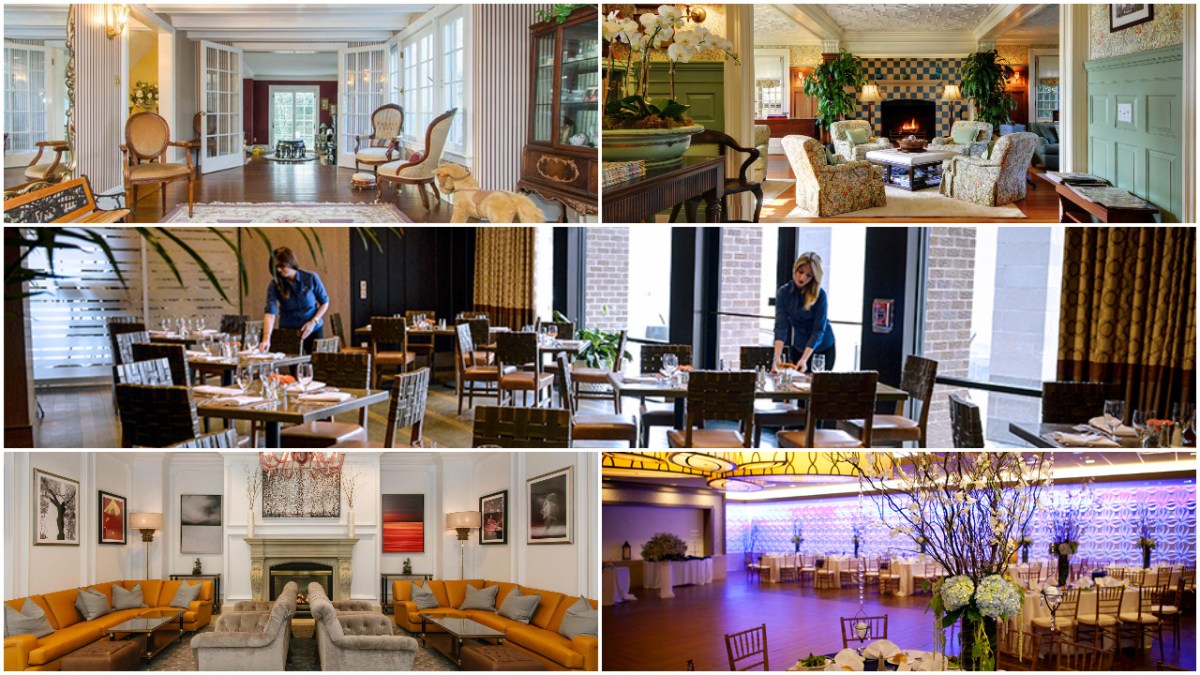Long Islanders may not give tourism here much thought—unless they want someone to blame for summer traffic on the South Fork—but it plays a vital part in our regional economy. Those employed within the Long Island hotels and hospitality industry fervently want it to have a bigger role here year-round. Creating a great destination miles from the Manhattan skyline in a place not universally known for having great hotels, luxury resorts or secluded getaways is a daunting proposition, but dozens have unarguably succeeded on the Island despite the challenges. Their stories reveal a lot about the possibilities and the pitfalls of hosting travelers here.
Since Kristen Jarnagin became president and CEO of the Long Island Convention and Visitors Bureau last year, she’s heard these narratives firsthand. With a staff of 14 people and a budget of $3 million, she runs the “official tourism promotion agency” for our travel and tourism industry.
“I hear a lot of things from our hoteliers,” Jarnagin said. “We are really lacking in product on Long Island. To me, it is completely unfathomable that we don’t have a convention center. Look at our proximity to New York City. We have some of the world’s best research, health care and education facilities—those are your three top core industries for having meetings and there’s nowhere to do it.”
Related: 15 Reasons Why There’s No Place Like Long Island
Jarnagin, who left the Arizona Lodging and Tourism Association to come here in 2015, is tasked with promoting this region as “a world-class destination for tourism, meetings and conventions, trade shows, sporting events and related activities.” For comparison’s sake, she noted that Arizona’s state tourism budget topped $26 million, while Phoenix and Scottsdale had separate budgets in the $20-million range. In her former state, only Flagstaff, with a population of 120,000 people and one downtown, had a tourism budget equal to Long Island’s.
Earlier this summer, the Long Island agency redesigned its website and launched a new marketing campaign targeting domestic and international audiences. To draw history buffs, the visitors bureau ran TV commercials plugging the “Washington Spy Trail” along Route 25A with spots airing during AMC’s series Turn, which portrays the travails of the Culper spy ring that aided Gen. George Washington when the British occupied the Island.
“New York is the ultimate international travel destination in the world,” Jarnagin told the Press. “Yet we seem so disconnected [from it].”
She says her goal is to “brand” Long Island.
“My job is to give people a positive perception of Long Island,” explained Jarnagin. “I try to get them here. It’s really up to the communities and the hotels to promote themselves.”
Related: How L.I.’s Culper Spy Ring Helped Washington Beat the British
No one can deny the market potential for Long Island. In 2015, travelers reportedly spent more than $5.5 billion here, supporting almost 77,000 jobs. Tourism contributed $676 million in state and local taxes, while sales, property and hotel-bed taxes generated more than $372 million in local tax revenue.
According to a 2015 study, “The Economic Impact of Tourism in New York,” conducted by Tourism Economics, a company run by Oxford Economics in Philadelphia, the average household in our region would have had to pay an extra $720 to maintain the same level of government revenue if tourism-generated state and local taxes were eliminated from the equation. Next to New York City, which gets 65 percent of visitors’ spending in the state, Long Island ranks second, with 9 percent, followed by Hudson Valley and the Finger Lakes at 5 percent. As for Niagara Falls, one of New York’s most famous natural attractions, it gets only 4 percent of the money travelers spend in the Empire State.
Jarnagin wants to get people to come to Long Island from far-away places because they’ll stay here longer and spend more money.
“The day trippers spend $60 a day, the person who comes overnight spends over $250, and the international visitor spends twice as much and stays twice as long,” she said. “We’re trying to put Long Island on the international stage.”
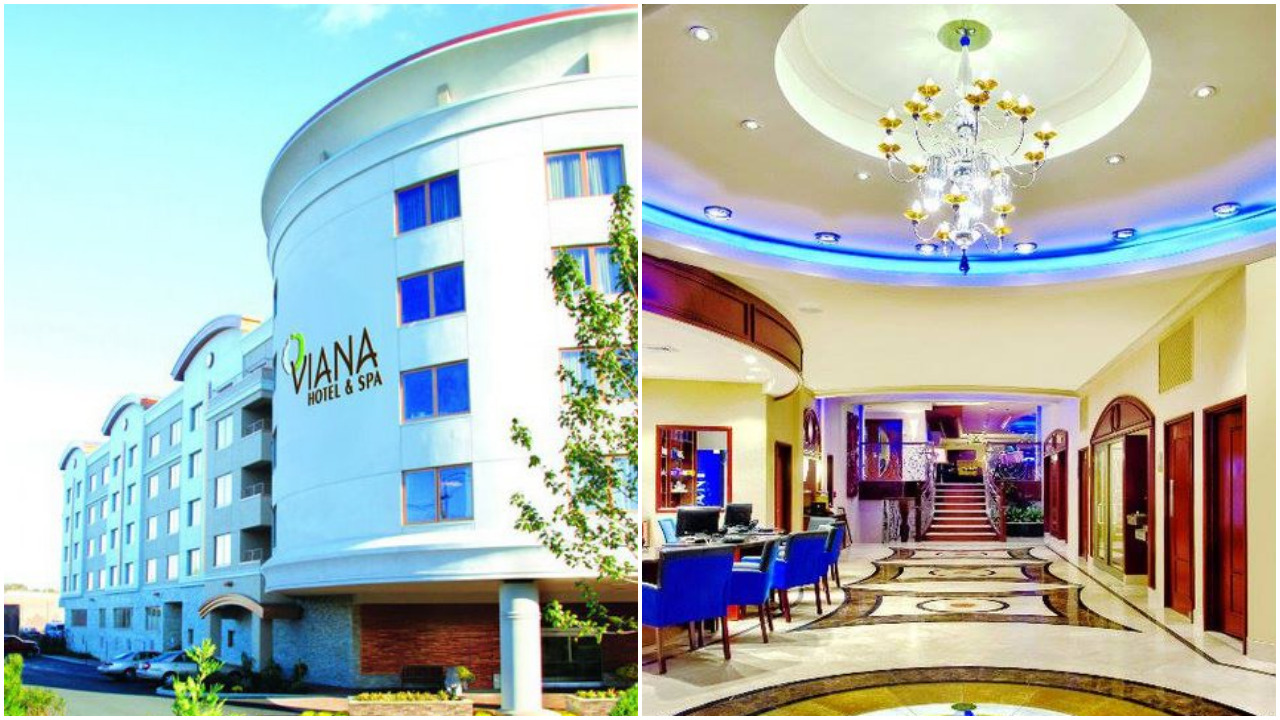
One of the more unusual hospitality venues is the four-star Viana Hotel and Spa in Westbury, an upscale, solar-powered, eco-friendly facility that is a member of the Small Luxury Hotels of the World. One claim to fame is that it hosted Long Island’s first same-sex wedding in 2011. Its Marco Polo Restaurant offers a fusion menu of Asian and Italian dishes.
“During the week it is primarily a corporate hotel, but on the weekends it is primarily a social hotel for wedding groups and events,” said Alan Mindel, the owner. The Viana also hosts the majority of pop bands playing in the area.
“The majority are good citizens,” Mindel said, refusing to say whether any unruly musicians had ever thrown a TV out the window. “If I’m doing my job properly, neither you nor the New York Post ever hears about it!”
He admits that the Viana’s Nassau market is “a different world” from the Hamptons or Manhattan but it does well.
“It is an oasis—a suburban hotel with a full spa,” he said. The Viana gets a lot of repeat guests, drawing some travelers from Europe and Asia as well as locally. It is the first and so far only LEED-certified hotel on Long Island, a goal of Mindel’s because utility costs are so high in this region. It’s also designed to be a feng-shui friendly property. His core customers come from the area’s wedding halls and country clubs, and he reaches others through social media.
“Google has done a lot for the industry,” Mindel said. “Years ago, print media was important, but that’s not the case today.”
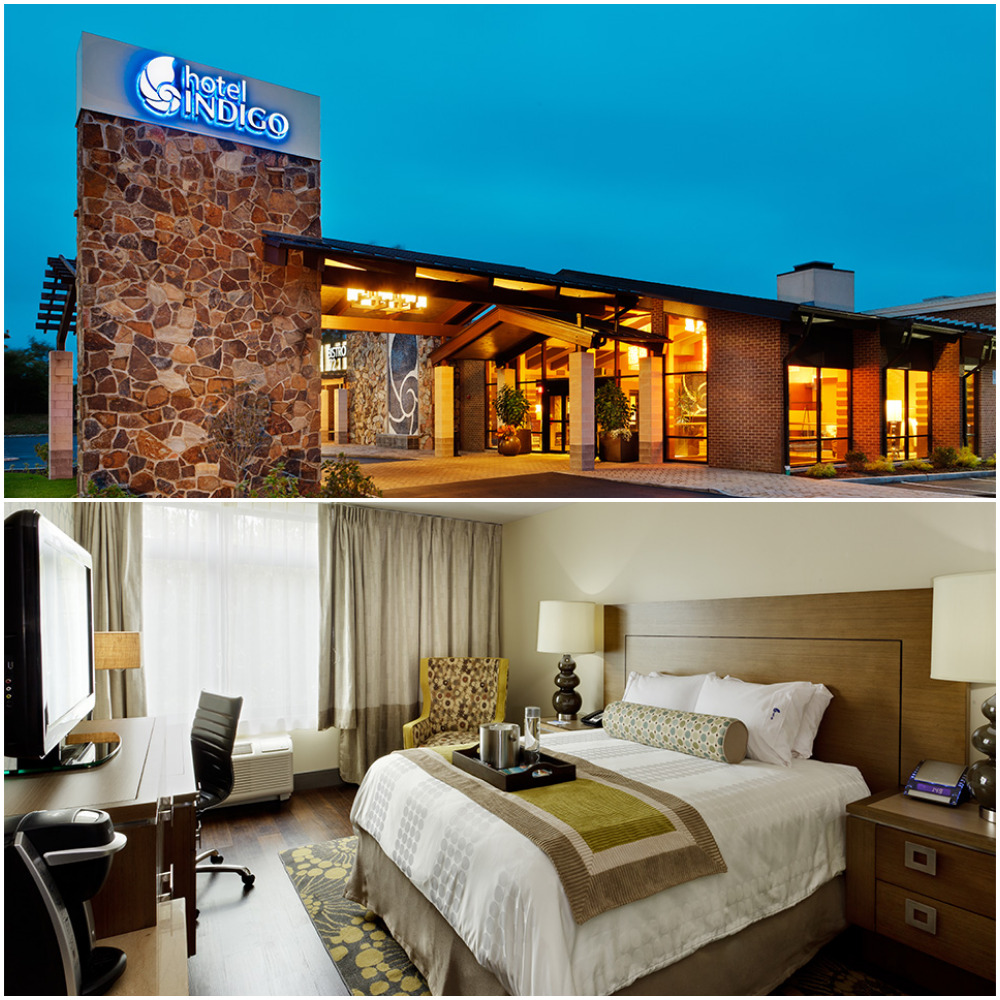
Out in Riverhead on Main Street is the Hotel Indigo, a modern boutique style facility with a bistro restaurant and a bar, plus a terrace with an outside fireplace, which makes its claim as an ideal travel destination because it’s at “the crossroads of the North Fork and the Hamptons.” It’s a short drive from the vineyards, the Splish Splash Waterpark in Calverton and the Tanger Outlets. Visitors are encouraged to bring their pets, too.
Related: 43 Fun Things To Do With Your Kids On Long Island
Rob Salvatico and his dad Albert Salvatico bought the venue in 2004 and eventually transformed it. Most recently a Best Western, the place first took shape as a Holiday Inn when it opened in 1972.
“The décor had barely changed since 1972 when we got there!” said Rob Salvatico with a laugh. He believes Riverhead’s central location has been a boon, because it’s the last available commerce hub on the Island, following Garden City, Melville and Hauppauge.
“What does Riverhead have that none of those other commerce hubs have?” he asked rhetorically. “We have the destination appeal of serving Long Island wine country, which has been undergoing unprecedented growth, and the Hamptons.” As Salvatico sees it, “This is a high-barrier entry market with a lot of potential upside.”
Related: Long Island Wineries and Vineyards Guide
To market the Indigo, he said, “We spend upwards of $80,000 a year on social media, no exaggeration.” He sees the target audience as some 15 million tri-state residents in the greater metropolitan area.
“I’ve been quoted 9,000 times saying, ‘I don’t really market the hotel, I market the region. And I market the hotel as your authentic guide to the region.’ That’s the whole Indigo program,” explained Salvatico.
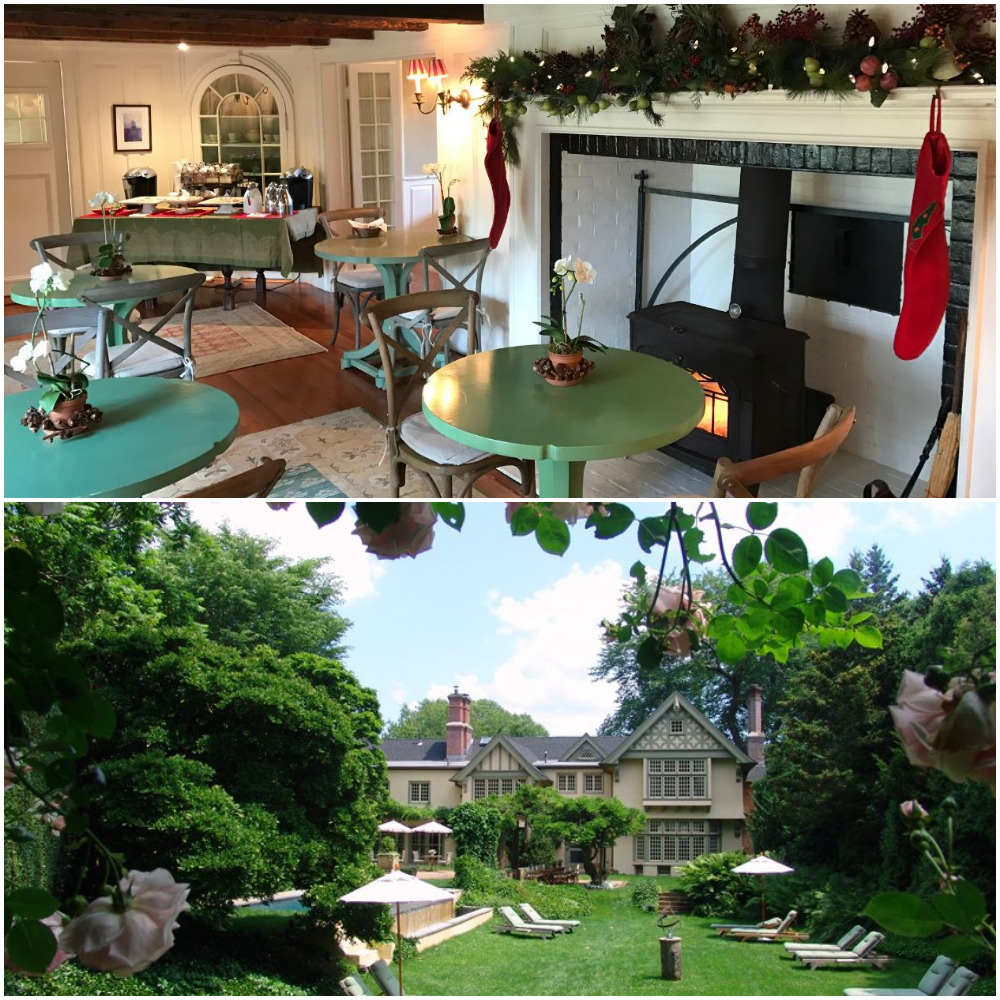
Further out in East Hampton is an historic getaway, The Baker House 1650, an upscale English manor-style bed-and-breakfast with luxury accommodations including fireplaces and whirlpool baths in most rooms and suites. Its gardens include 200-year-old wisteria and gingko trees that date back centuries. The house was first built in 1648 by a sea captain named Daniel Howe, who sold it to Thomas Baker, one of East Hampton’s original founders. At one point it was known as Baker’s Tavern, serving also as a town meeting hall, a community center and a place for religious services. Its present transformation began in 1911, when its owner James Harper Pool hired Joseph Greenleaf Thorp, a prominent architect with ties to the English Arts and Crafts movement, to turn it into an expansive English manor.
For the last 12 years, Antonella Bertello-Rosen has been running the hotel with her husband Bob Rosen, a surgeon.
“I wish the season were longer than it is,” she said. “We’re very busy June, July, August, September, maybe a little bit in October, and then it really starts dropping down incrementally. January is probably our worst month. Some people like to be here for the holidays, but the only way we survive the winter, basically, is by taking deposits for the following season.”
Related: A Beginner’s Guide to Fire Island
Most of their marketing is done by word of mouth, since they only have a total of seven rooms to fill. Recently, Bertello-Rosen has been encouraged by the growing number of off-season happenings in the area, such as the Hamptons International Film Festival and Long Island Restaurant Week on the East End, which bring in more visitors. About 25 percent of her guests are international travelers, predominantly from Britain and Germany.
“We try to advertise abroad as much as we can for the international guests,” she said. “They seem to be more willing to come during the off-season. You still have a lot of the really good restaurants open, many of the stores are still open, and all of the museums are open… We are relatively close—even in summer with the traffic—to the Parrish Museum and The Watermill Center, which is amazing, and Guild Hall, which is literally across the street from us. They do performances all the time.”
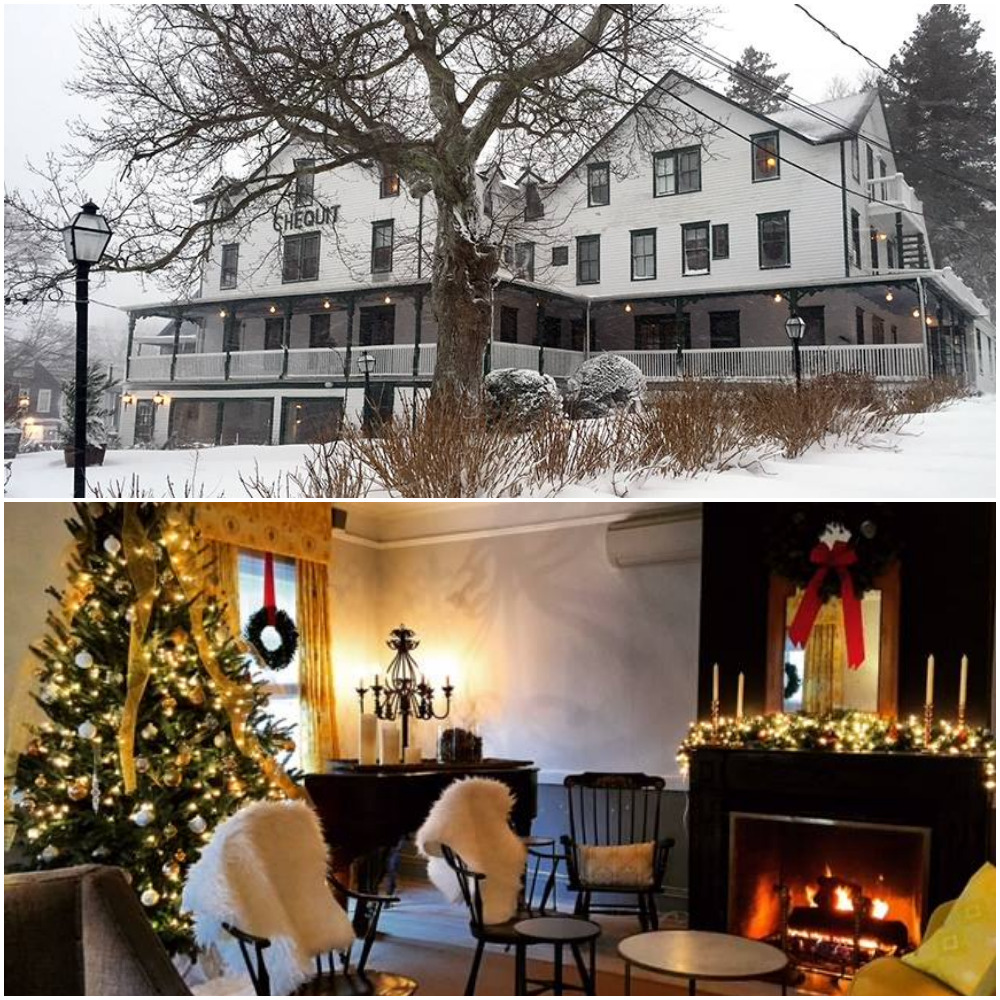
Out on Shelter Island is The Chequit Inn, an upscale Victorian-style bed-and-breakfast with 37 rooms (19 in the main house and 17 in a separate structure), plus an inviting front porch and a seasonal American eatery called the Red Maple. Originally built in 1872 as a religious retreat, it’s got a colorful history, once hosting Frank Sinatra and Marilyn Monroe, although not necessarily at the same time. Its owners, Kevin O’Shea and David Bowd, having made their reputation with their Salt House Inn in Provincetown, bought the place in 2013, spent a year renovating it, and officially opened The Chequit in 2015, when it drew raves in Travel & Leisure and Vogue magazine as one of the top summer inns.
“What I felt was really missing on Shelter Island was a great hospitality experience,” Bowd told the Press. One day he took the ferry to the island, drove up the hill, and spotted the old hotel.
“It was early in the evening, and it was really tired and run down,” he recalled. But he loved the building. “A hotel for me is all about a whole, encompassing, welcoming experiencing. The Chequit was the opposite of that when I first went there,” he said. “But I loved its history, and I loved its character.”
Related: Slavery and Salvation: Long Island’s Underground Railroad
Shelter Island is not as well-known as other East End locales, but Bowd appreciates its special appeal.
“It’s a really beautiful island, and you can only get to it on a ferry,” he said, noting that it’s accessible by Hampton Jitney from Manhattan to Greenport and then a five-minute walk from the dock.
“It’s a real get-away, a fairly isolated experience over the Hamptons’ experience,” he continued. “On Shelter Island you can commune with nature year ’round. In the winter, there’s nowhere more beautiful than Shelter Island.”
The Chequit draws about 20 percent of its guests from overseas, mostly through social media and word of mouth from repeat customers. He notes that Europeans who want to come to New York City in the summer wind up spending three or four days in Manhattan and coming out to Shelter Island “for a few days so they can lie on the beach and relax.”
Still, he concedes that after July and August, the traffic dies down considerably. “We’re always trying to win new guests coming to the island,” Bowd said, “and to constantly educate people that this is a beautiful place, and you can get a great hotel experience outside Manhattan.”
As he puts it, “It’s far enough away so that it’s isolated, and it’s close enough that it’s connected.”
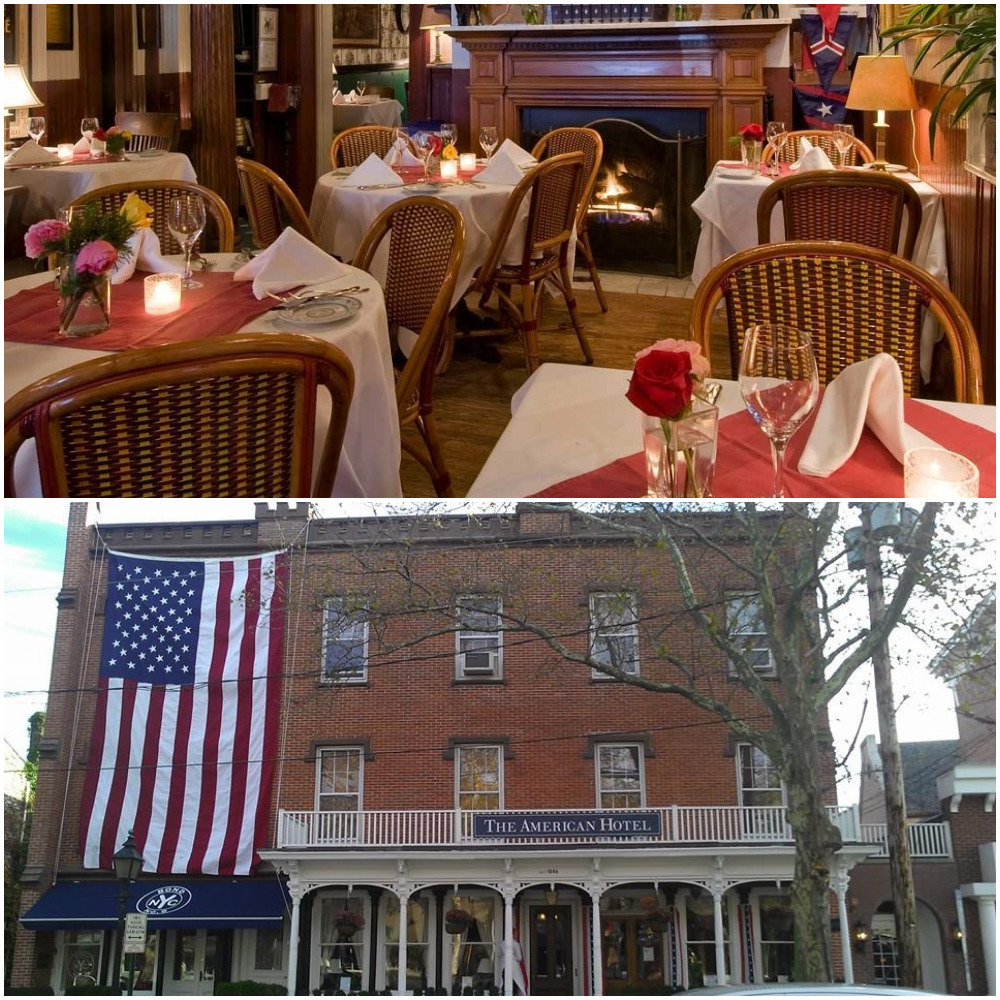
Just a ferry ride away in Sag Harbor is The American Hotel, a three-story landmark built in 1846 on the town’s Main Street. It draws guests from Manhattan who take the Hampton Jitney to stay in one of the eight double rooms, and locals who flock to the bar and restaurant. The present owner, Ted Conklin, bought the former boardinghouse in 1972 and turned it around after decades of neglect. He literally had to shovel coal dust out of the basement one bucket at a time. Now the cellar holds thousands of bottles of fine wine. In 1981 the hotel won Wine Spectator’s Grand Award for the restaurant’s superb wine list, and it’s never looked back.
Related: Long Island Craft Beer Guide
One of its legendary evenings saw Billy Joel and Bono hanging out together on the couch by the backgammon board. Another saw Jimmy Buffett take a stroll from the barroom to entertain diners on the porch. For years, the place has been a haven for artists and writers in the Hamptons. Perhaps that’s why it’s always gotten good press. Peter Applebome in The New York Times once referred to it as “sort of the Hamptons’ answer to Rick’s Café Americain in Casablanca.” As it boasts on its website, “discerning world travelers agree that The American Hotel is in a class of its own.”

Also in a class by itself is the luxurious Garden City Hotel, 15 miles from Manhattan and a few minutes’ walk from the Long Island Rail Road. This Nassau venue stands as one of the most modern-looking hospitality venues on the Island. It’s hard to believe it dates back to 1874, when it opened to much fanfare, but of course it’s been transformed almost half a dozen times over the years—the 1901 version was torn down in 1973—and it got its latest upgrade in 2014, when Marcello Pozzi, a renowned Italian designer, finished redecorating all the guest rooms and suites, adding WiFi and flat-screen TVs as well as a sophisticated decor. Its executive suites have kitchenettes and living areas, and its penthouse suites come with private outdoor patios, along with views of the New York City skyline. Besides a 25,000-square-foot event space, there’s an indoor pool, sauna, fitness center, the Polo Steakhouse, a patio bar and lounge. The hotel also provides pet walking and feeding services.
Related: The Complete Guide to Long Island Colleges and Universities
As the hotel boasts on its website, its clientele includes “the wealthy, the celebrated and the politically powerful.” Indeed, then-presidential candidate Sen. John F. Kennedy and his wife Jackie stayed there in 1959. They’re just two of the luminaries who’ve given the hotel its cache over the years. Since the days of the original founder, A.T. Stewart, the Garden City Hotel has tried to uphold his dream to run “an oasis hotel as a country retreat far from the city but close enough for jazz,” as current owner Morris Moinian of the Fortuna Realty Group put it at the venue’s 140th anniversary ceremony. Even though it’s ensconced in suburban Long Island, this world-class hotel regards itself as a destination property within reach both of Manhattan and some of the best beaches in the Northeast.
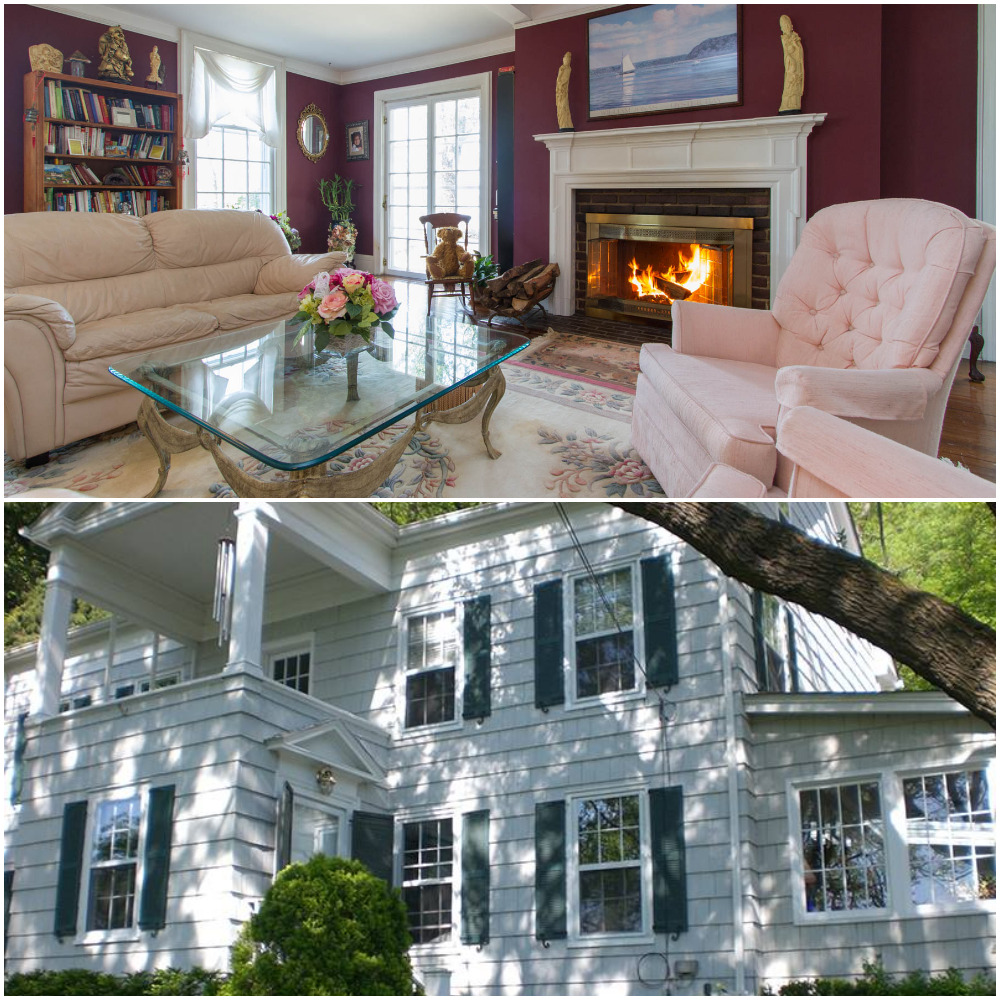
A much quainter and more intimate space in Nassau County is The Harbor Rose, an elegant bed and breakfast in a former rectory for St. John’s Church dating back to 1849. Overlooking inner Cold Spring Harbor, it’s within walking distance of Cold Spring Laboratory, three miles from The Paramount Theater in Huntington Village and five miles from Teddy Roosevelt’s landmark home, Sagamore Hill, to name two other local attractions. The place boasts two comfortably furnished rooms, each with fireplaces and balconies.
“I feel like an ambassador to the community,” said Deirdre Ventura, who bought the place in 2007 but just got her business permit from the Town of Huntington almost a year ago. “We get a lot of international visitors.”
Related: Long Island’s Teddy Roosevelt: King of the Hill
One of Kristen Jarnagin’s many tasks at the Long Island Convention and Visitors Bureau is to remind Long Islanders to welcome travelers from near and far because it’s in their own best long-term interests.
“I know that visitors can be annoying,” Jarnagin said. “They clog up the freeways. They take your favorite seat at the restaurant. But they’re taxed at every turn: where they sleep, where they shop, where they eat. It’s one of the highest-taxed industries in the country, and those taxes hit our bottom line. They’re bringing in new dollars, not shifting dollars around the Island.”
Another goal of hers is to extend the travel season and make Long Island a year-round destination. Right now, summer is the peak period when rates are the highest and most of the travelers coming here are more affluent. But Jarnagin is aiming for a different audience between Labor Day and Memorial Day.
“What we plan to do is shift our marketing strategy during the slow seasons to our residents on Long Island,” she said. With that in mind, she wants to play on local attitudes: “We’re not going to fight that traffic, we’re not going to pay those rates. We’re going to wait until all those tourists leave, and then we’ll go out and enjoy all the amenities in our own backyard when the time is right because we don’t care about winter—we’re tough.”
In the cold snowy months ahead, Long Island’s hotel operators hope she’s right—and that many more Long Islanders will come out in droves to spend the night under their roofs instead of their own homes. After all, if they wait until summer, it’s going to be too late, because the best places are booked well in advance.
And that’s how the Long Island hotels and hospitality industry stays in business.
Featured Art: Long Island Hospitality: Long Island is home to some unbelievable hotels; this collage includes scenes from Hotel Indigo, The Garden City Hotel, The Baker House 1650 and The Harbor Rose. (Photos from respective hotels’ official websites)




